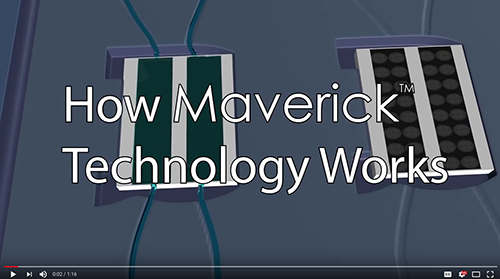International Team of Scientists Develop Smart Diaper That Alerts Parents When It Is Soiled and Needs to Be Changed
Not the first smart diaper to come along, but consumers seem unready for diapers that can flag urinary tract infections and other biomarkers usually tested by clinical laboratories
Will wonders never cease? For centuries, parents had only their own senses to determine when infants needed diaper changing. Today, however, caregivers can rely on “smart diapers” to send alerts when a diaper is soiled. Crying, smelly babies may no longer be the gold standard in diaper management. But are smart diapers practical?
Scientists at Penn State University in collaboration with scientists from the Hebei University of Technology and Tianjin Tianzhong Yimai Technology Development Company in China think so.
Funded by the National Institutes of Health (NIH) and the National Science Foundation (NSF), Penn State’s new smart diaper is based on a simple pencil-on-paper design that utilizes an electrode sensor array treated with a sodium chloride solution that detects dampness when urine is present.
The sensor array is “so cheap and simple” it “could clear the way for wearable, self-powered health monitors for use not only in ‘smart diapers’ but also to predict major health concerns like cardiac arrest and pneumonia,” a Penn State new release noted.
However, clinical laboratory managers following similar developments probably know that this is not the first scientific effort to develop a smart diaper that uses some type of sensor to detect a biomarker and issue an alert to the wearer or caregivers.
For example, nine years ago, In “New ‘Smart Diaper’ Tests Baby’s Urine for Urinary Tract Infections, Dehydration, and Kidney Problems—then Alerts Baby’s Doctor,” Dark Daily reported on a digital smart diaper invented by New York startup Pixie Scientific that constantly monitors a baby’s health to detect urinary tract infections, kidney problems, or dehydration before the health issue escalates. That smart diaper also uses a smartphone app to send data to the baby’s doctor.
In this latest research effort, the scientists published their findings in the journal Nano Letters, titled, “Pencil-on-Paper Humidity Sensor Treated with NaCl Solution for Health Monitoring and Skin Characterization.”

“Our team has been focused on developing devices that can capture vital information for human health,” said Huanyu “Larry” Cheng, PhD (above), the James L. Henderson, Jr. Memorial Associate Professor of Engineering Science and Mechanics at Penn State in a news release. “The goal is early prediction for disease conditions and health situations, to spot problems before it is too late.” This is yet another example of how researchers are working to take more testing out of clinical laboratories and offer unique assays that can be used as wearables—whether as a diaper, a skin patch, or a smart watch. (Photo copyright: Penn State University.)
This Smart Diaper Is as Simple to Use as Paper and Pencil
The Penn State sensor array takes advantage of how paper naturally reacts to wetness and utilizes the graphite in pencil marking to interact with the water molecules and sodium chloride.
Once the water molecules are absorbed by the paper, the sodium chloride solution becomes ionized and electrons start to stream towards the graphite. This movement sets off the sensor, which is extremely sensitive to humidity. According to the study, the sensor can provide accurate readings over a wide range of humidity levels, from 5.6% to 90%.
“We wanted to develop something low-cost that people would understand how to make and use, and you can’t get more accessible than pencil and paper,” said Li Yang, PhD, a professor in the School of Artificial Intelligence at China’s Hebei University of Technology and one of the authors of the study, in the Penn State news release.
“You don’t need to have some piece of multi-million-dollar equipment for fabrication. You just need to be able to draw within the lines of a pre-drawn electrode on a treated piece of paper. It can be done simply and quickly.”
The diaper is connected to a tiny lithium battery. When the sensor recognizes an increase in humidity the battery powers transmission of the change to a smartphone via Bluetooth technology. This notification informs caregivers that it is time to change the diaper.
“That application was actually born out of personal experience,” explained Huanyu “Larry” Cheng, PhD, James L. Henderson, Jr. Memorial Associate Professor of Engineering Science and Mechanics at Penn State, one of the authors of the study and father to two young children. “There’s no easy way to know how wet is wet, and that information could be really valuable for parents. The sensor can provide data in the short-term, to alert for diaper changes, but also in the long-term, to show patterns that can inform parents about the overall health of their child.”
Do Consumers Want Smart Diapers?
Research into such wearable sensors has been gaining momentum in the scientific community as a novel way to detect and deal with several medical conditions. The Penn State team hopes that devices such as their smart diaper can be used in the future to alert caregivers about the overall health of their children and clients.
“Our team has been focused on developing devices that can capture vital information for human health,” Cheng said. “The goal is early prediction for disease conditions and health situations, to spot problems before it is too late.”
Previous research teams have had similar smart diaper goals.
In “Researchers in Japan Have Developed a ‘Smart’ Diaper Equipped with a Self-powered Biosensor That Can Monitor Blood Glucose Levels in Adults,” we covered how a team of researchers at Tokyo University of Science (TUS) in Japan had developed a diaper that detects blood glucose levels in individuals living with diabetes, a debilitating illness.
However, these types of products have yet to gain significant popularity with consumers. Regardless, sales projections for smart diapers remain positive.
According to a MarketsandMarkets report, the smart diaper market, estimated to be $646 million (US) in 2021, is expected to surpass $1.5 billion by 2026. The demand for smart diapers, the report notes, is increasing due to:
- Growing elderly populations,
- Rising disposable incomes,
- Increasing personal hygiene awareness,
- Growing populations in emerging countries, and
- Expanding preference for advanced technology when it comes to health.
So, it’s uncertain if consumers are now ready for a device in their baby’s diaper telling them it’s time for a change. Regardless, researchers will likely continue developing tools that combine new diagnostics with existing products to help people better understand and monitor their health and the health of their loved ones.
Meanwhile, clinical laboratory managers and pathologists can remain on the alert for future published studies and press releases announcing new wearable items containing sensors, such as smart diapers. The unanswered question is whether both consumers and healthcare professionals will consider these novel inventions useful devices in the care of young and old alike.
—JP Schlingman
Related Information:
Researchers Developed a “Smart Diaper” That Sends Notifications to Parents’ Phones
New Sensor Enables ‘Smart Diapers,’ Range of Other Health Monitors
Real-time In Vitro Diagnostic Results at the Point of Care? Possible? One San Diego-based IVD Developer Says “Yes!”
Genalyte’s cloud-based Maverick Detection System could potentially change how and when doctors order blood draws, altering long-standing clinical laboratory workflows
Anatomic pathologists and medical laboratory leaders may be aware of efforts in the in vitro diagnostics (IVD) industry to perform clinical laboratory tests with smaller quantities of blood. The most high-profile company to try and fail is Theranos, which both Dark Daily and its sister print publication The Dark Report reported on as events unfolded.
So far, though, continued efforts to dramatically reduce the amount of blood needed for most typical medical laboratory tests have come up dry. But this has not stopped innovative companies from trying to do so.
One such company is San Diego-based Genalyte. The biomedical diagnostics developer has announced it is readying its new Maverick Detection System (Maverick), which, according to the company’s website, “completes a comprehensive battery of blood tests in the physician’s office with results in 15 minutes.”
According to a news release, “Genalyte is laying the groundwork to move the business of biomedical diagnostics online, with the idea of creating an integrated delivery service for test results that can be generated from a drop of blood.” If successful, Maverick may be poised to disrupt the phlebotomy and clinical laboratory industries in a big way.
Fifteen Minutes from Fingerprick to Clinical Lab Test Results
Maverick, according to its developers, “[will] send digital samples to the cloud for quality review before releasing to the physician and patient. Our central lab handles tests that cannot be completed onsite.
“At the core of our cloud-based, diagnostic laboratory offering is revolutionary technology that uses silicon photonic biosensors to perform multiple tests off a single drop of whole blood in 15 minutes,” notes Genalyte’s website.
In a MedCity News article, Cary Gunn, Genalyte’s founder and CEO, said, “There will always be a need for esoteric testing that needs to be referred to a laboratory. But for the vast majority of routine testing, there’s no reason why that can’t be done in the doctor’s office.”
How Maverick Completes Medical Laboratory Tests in Doctor’s Offices
According to Genalyte’s website, “The Maverick Detection System performs real-time detection of macromolecules in crude samples using biologically functionalized silicon photonic biosensors lithographically printed on disposable silicon chips.”
About the width of a pencil erasure, Maverick biosensor chips “are individually functionalized with unique probe molecules and are individually interrogated, making highly multiplexed analysis possible. As a sample flows over the chip, the probes on the sensors bind with their corresponding ligands. This binding results in a localized change in refractive index on the sensor surface; this change is directly proportional to analyte concentration.”
“The silicon chip itself is watching the chemical reactions take place. Anytime two molecules bind, we can see that happen. So, the technology is capable of almost an infinite number of tests,” Gunn explained in the MedCity News article.
According to the developer, test results are available “in 10-30 minutes depending on the type of assay performed.”

Cary Gunn, PhD, Genalyte’s Founder and Chief Executive Officer, said in a news release that the San Diego-based biomedical diagnostics company wants “to put a rapid and powerful suite of diagnostic tests in every physician’s office.” (Photo copyright: Genalyte.)
Pilot Studies Show Test Feasibility in Doctor’s Offices
The company also announced completion of two pilot studies of the platform’s effectiveness in performing anti-nuclear antibody (ANA) testing. The purpose of study “one” was to “evaluate the feasibility of using this novel instrument to perform ANA 8 tests in the clinic and to compare those results to the same sample tested in Genalyte’s CLIA registered laboratory.” Study “two” focused on “Detection of anti-nuclear antibodies for the diagnosis of connective tissue diseases (CTD).”
The ANA test is often ordered by physicians for diagnosis of CTDs, including:
• Rheumatoid arthritis;
• Systemic lupus erythematosus;
• Raynaud syndrome; and,
• Systemic scleroderma, according to an article in Rheumatoid Arthritis News.
“We are starting with rheumatology, but I call that our entry point,” Gunn told MedCity News. “Our goal is to decentralize the vast majority of diagnostic testing to be near the patient and near the physician.”
The two studies together involved about 750 patients, who were tested by Genaltye’s Maverick system over four months. Results of their blood tests, via fingerprick in the doctor’s office, were compared to traditional medical laboratory procedures and patient diagnoses.

According to the Genalyte video above, “The Maverick Detection System … directly detects the binding of proteins or antibodies to the sensor in real-time and results are analyzed simultaneously with the accompanying Genalyte software. Almost all of the most time consuming and expensive parts of assay development and sample testing are reduced or eliminated.” Click on the image to view the video. (Caption and video copyright: Genalyte.)
According to the news release and the published clinical abstracts, the researchers concluded that:
• Positive and negative results on whole blood tested on the Maverick system highly correlated with serum tested on previously approved devices;
• Multiplex ANA testing on whole blood in physician offices is feasible;
• Venous draw and fingerstick blood samples highly correlated; and
• Maverick has the propensity to improve patients wait times for diagnosis and to enhance their testing convenience.
“There is extremely high correlation for absolute value between venous blood and fingerstick blood, and between positive and negative results seen with whole blood on the Maverick and serum on the FIDIS Connective 10,” noted study “one” researchers.
“I’m impressed,” Patricia Jones, PhD, former President of the American Association for Clinical Chemistry (AACC), told Bloomberg News. “The game-changing part of this would be being able to do testing and potentially make a diagnosis immediately, instead of having to send out lab tests, wait several days, and then call the patient,” she added.
Can One Drop Do It All? Some Researchers Advise Caution
The controversy surrounding point-of-care fingerprick capillary blood draws performed on in-office automated blood analyzers, versus clinical laboratory venous draws performed on high-volume laboratory systems, is not new. Dark Daily has reported on several blood test studies in the past.
One such study involved bioengineers at Rice University. It concluded that fingerpricked capillary blood may not be accurate or reliable enough for clinical decision-making.
Their study acknowledged the value of such capillary blood testing in remote areas. But it also urged caution about use of measurements from a single drop of fingerprick blood.
“Using both a hematology analyzer and POC hemoglobinometer, we found the variability of blood component measures to be greater for successive drops of fingerprick blood than for multiple drops of venous blood,” the researchers wrote in The American Journal of Clinical Pathology (AJCP).
Research will no doubt continue until a viable, accurate, and affordable blood analyzer system that conducts dozens of clinical laboratory tests based on a few drops of blood comes to market. It’s basically inevitable in today’s world where computers can be built from molecules and miniature medical laboratories can be placed in chips, skin patches, and needles.
Pathologists and clinical laboratory leaders would be well advised to monitor the development of these various new diagnostic technologies. For most of the past decade, there has been a steady parade of companies and research teams announcing new discoveries that could revolutionize clinical diagnostics as performed today. However, few disruptive clinical laboratory tests or analyzers based on these technologies have made it into the clinical marketplace.
—Donna Marie Pocius
Related Information:
Can Genalyte Achieve What Theranos Touted?
Genalyte Takes Aim at Lab Testing Giants with Cloud-Based Service
Genalyte Raises $36 Million From Khosla for its One-Drop Blood Test
AACC President Calls Genalyte’s Blood Diagnostic Tests ‘Game-Changing’
Genalyte Diagnostic Tool Shows Potential to Improve Turnaround Time in RA, Other Conditions
Wearable Tattoo Can Monitor Blood Alcohol Levels with Diagnostic Technologies Familiar to Clinical Laboratory Scientists
The minute electronic device accurately determines alcohol blood levels by sampling the wearer’s sweat
During a night out on the town, what better way for individuals to monitor their consumption of alcohol and blood alcohol levels than by wearing a tattoo that can monitor blood alcohol levels? That’s the vision of researchers at the University of California, San Diego (UCSD).
This temporary tattoo would be capable of helping an individual determine, “Am I drunk or just slightly buzzed. Am I becoming a public nuisance? Am I able to drive right now?” An innovative, cutting-edge device is being designed to help consumers definitively answer those questions.
Clinical chemists, medical laboratory scientists, and pathologists will be interested in the diagnostic technologies used to accomplish this testing. The device is basically a malleable, temporary tattoo that adheres to the skin and induces sweat. It is equipped with a flexible electronic circuit board and a hydrogel patch that contains pilocarpine, a sweat-inducing drug. The electrodes in the device collect a sample to determine blood alcohol content. That data is then wirelessly transmitted to a mobile device, such as a laptop or a smartphone, and provides an accurate reading of whether or not a person is inebriated. (more…)
Pathology Laboratory in an Ingestible Pill? Not Yet, But Maybe Sooner than You Think
Proteus Biomedical, Inc. prepares to launch a “smart pill” to remotely monitor how medication affects patients.
If some experts are correct, it won’t take long to create ingestible devices that are capable of conducting clinical laboratory tests within the body. These devices would transmit the laboratory test results to physicians over the Internet by using wireless technology.
As soon as 2011, Proteus Medical, Inc., of Redwood City, California, says it expects to introduce an ingestible device for managing heart disease and chronic disease to the clinical market. Proteus named this device the Raisin System and a popular term for this type of technology is “smart pill.”
(more…)



